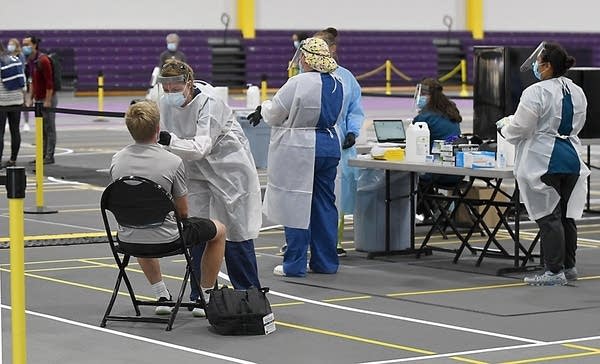Sept. 7 update on COVID-19 in MN: 638 new cases, 3 more deaths

A nurse takes a swab from a patient on Sept. 2 at the mass testing COVID-19 clinic at Minnesota State University, Mankato's Myers Field House in Mankato, Minn.
Pat Christman | Mankato Free Press file
Go Deeper.
Create an account or log in to save stories.
Like this?
Thanks for liking this story! We have added it to a list of your favorite stories.


